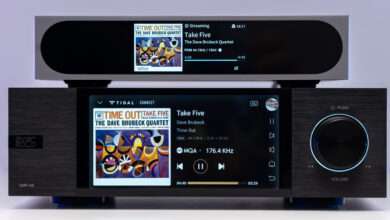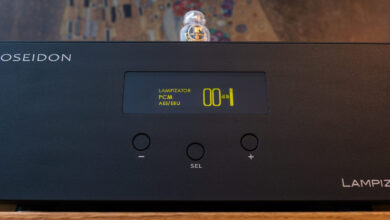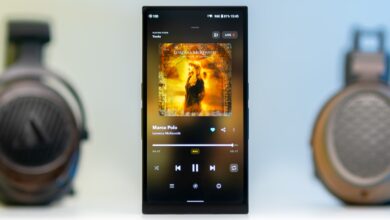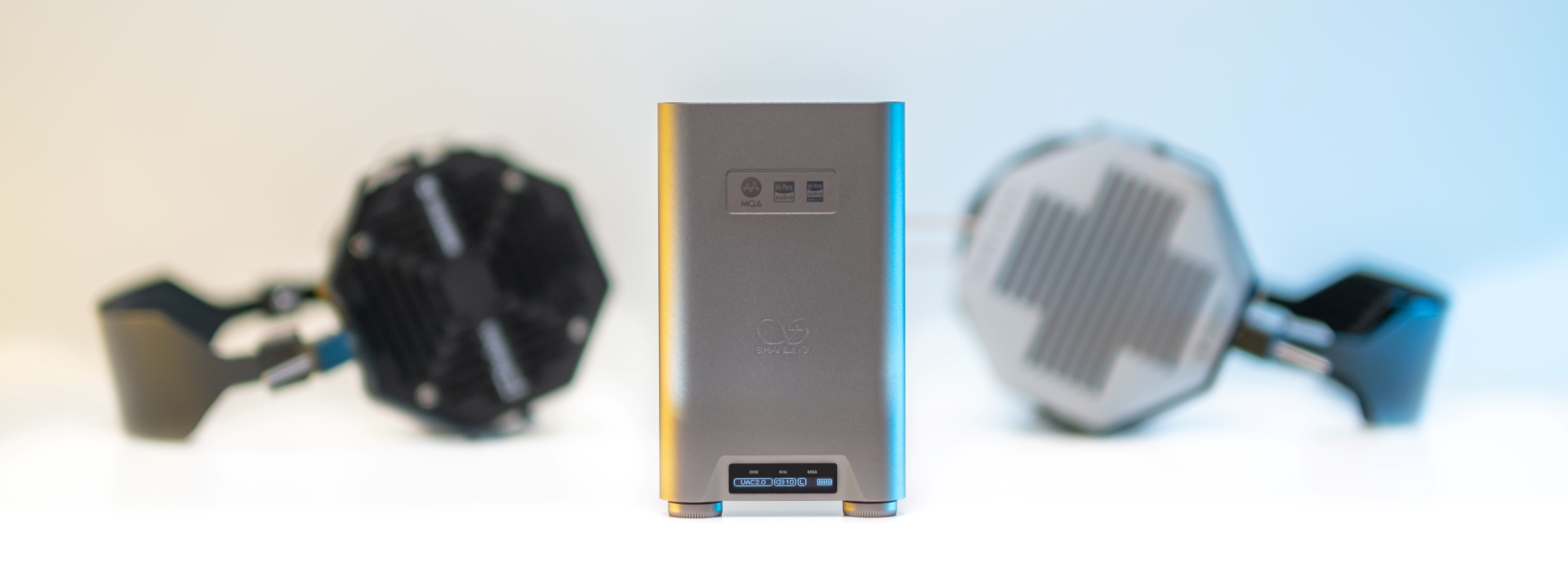
Which came first: the chicken or the egg? An old riddle that’s sparked many arguments throughout the ages. A tricky one indeed as you need a chicken to lay an egg, but back to the original question, with amniotic eggs showing up roughly 340 million or so years ago, and the first chickens evolving at around 58 thousand years ago at the earliest, it’s a safe bet to say that the egg came first. Audiophilia is a much younger concept, winning our hearts and blooming into a wonderful hobby about a century ago, and if you’re wondering which came first: the portable DAP or the DAC/Amp combo? It’s simple! DAC/Amp combos are here for a quarter century and when smartphones became a thing later on, portable DAPs started appearing as mushrooms after the rain. Apple kickstarted and tried to kill the DAP market, but it prevailed and…thrived. The DAPs are strengthening their numbers at a steady rate and interestingly enough, the DAC/Amp market isn’t showing signs of decline as clearly, people are loving their tunes on the go as much as they do at home.
But wait…there is a new category of portable devices that were invented by Shanling a few moments ago and those are hybrid DAC/AMP & DAP combo mutants, which we’ll be taking today for a spin. With the rise of harder-to-drive portable headphones such as Abyss Diana Phi and planar driver IEMs which are craving more current to regular IEMs, a time came to make not only great sounding DAC/Amp combos, but powerful ones that could drive all and everything with aplomb.
The DAC/Amp wars intensified when the 1-Watt per channel barrier was breached. FiiO Q7 killed an old preconception that portable devices can’t properly drive big @ss planar headphones, as besides pushing and pulling membranes as a bloodthirsty berserker, Q7 was able to drive the mythical Hifiman Susvara close to optimum performance in DC-power mode, spitting 3 fiery Watts per channel. Shanling always had a watchful eye over all things portable audio and while their newest and greatest portable DAC/Amp combo will provide a slightly lower output of 1.3 Watts, two aces under its sleeves weren’t revealed yet…features we didn’t encounter on portable devices as of yet, but more about that in a jiffy.
Shanling’s H7 is currently the priciest portable DAC/Amp combo we tested around here coming at $829, but there’s so much more than meets the eye. Starting with a brand-new DAC chip, low-pass filter, analog stage, and finishing with a half-baked DAP section that uses microSD cards filled with music, controlled via a Shanling app installed on a smart device, H7 has a few things that might awaken your curiosity. Yep, you’ve read that right! You can use it as a DAP with a microSD card inserted into it, controlling that lossless dance party with your phone. It can work as a portable or desktop DAC/Amp combo and the RCA outputs on its back feel like the icing on the cake, blurring the line between portable and desktop devices. I don’t see it as another DAC/Amp combo and more like a re-imagination of the DAC/Amp & DAP genre, which H7 is trying to reinvent. As usual, I will be reporting about everything I find interesting to share with you, and for a good measure, I’ll add a comparison with its arch nemesis – FiiO Q7. Until that happens, let’s unbox it and see what can be found inside its package.

Unboxing Experience
Shanling reminds us once again that life’s short and we need to play more. After pulling the first cardboard packaging, an iridescent pattern will appear on thicker packaging filled with soft foam, which will protect the unit during shipping. Traditionally, two accessory boxes can be spotted below the unit. One holds a USB Type-A to Type-C cable and a bigger one holds a much shorter USB Type-C to Type-C cable, a soft carry pouch, and a long 3.5mm to RCA coaxial cable, which can be hooked to any digital transports that offer a coaxial output. Separately, you can purchase a leather case for $30 which fits it like a glove. It’s much softer on the inside to protect its aluminum housing and stiffer on the outside, offering good protection against the elements. It’s not that expensive and if you intend on using it on the go, then the leather case becomes a must-have accessory. Additionally, you can get a short USB Type-C to Apple Lightning cable which uses world-renown Neotech silver wire in case you’re rocking Apple devices, which will set you off around ~$25 via AliExpress.

Design & Build Quality
You can get the H7 in either twilight black or supersonic titanium color schemes, a fancy way of saying matte black or matte grey. We got it in matte grey, which is looking stunning up close. At this price, I expected outstanding build quality and I do believe, Shanling delivered a rock-solid one. Everything was crafted from aviation-grade aluminum with a rounded shape all around, which will save it from dents and scratches. Additionally, there are four super-short silicon feet in the package and if you’ll predominately use it as a desktop unit, then it would be wise sticking them underneath.
They armed it with a small 1.44” monochrome OLED screen which consumes little to no power. There are no buttons on this one, making it classier and easier to use versus a FiiO Q7 and of course, there’s tempered glass atop its screen, which could save can save the day for you. While it feels beefy in the hand versus your usual DAC/Amp combos, it is still considerably lighter and smaller versus a FiiO Q7, and instead of being transportable, I can fit it into my jeans pockets, making it easier to maneuver and carry around. Kudos to Shanling for that!
The nicest things that make it unique looking are those two wheels sticking out from its body, which make it symmetrical and unique looking. The left wheel is used to navigate its graphical user interface and the right wheel is used for volume adjustments and for powering on/off the unit. When the microSD card is engaged, the left wheel lets you change the tracks depending on the rotation, and in about an hour, I was easily controlling everything like an experienced DJ, changing gain, brightness, and volume levels with my eyes closed. It didn’t feel clumsy and its display was bright enough to be used outside on a sunny day.

Controls & Layout
While it might feel complicated at first, in less than ten minutes you’ll be navigating that GUI like Captain Nemo aboard the Nautilus. As I have mentioned before, the right wheel is used for powering the unit and controlling the volume, while the left wheel is reserved for input selection and for engaging its user menu. Apart from that, you have a regular 3.5mm output, a 6.35mm (1/4”) one that suggests a couple of things about its driving power and there’s a 4.4mm Pentaconn jack, which will be unlocking the full potential of the unit.
On the back, you have two USB-C inputs, one used for charging and the second one will unlock its internal DAC section. There is a 3.5mm digital coaxial input, and a pair of RCA analog outputs which will unlock its potential as a DAC unit for third-party headphone amps or integrated amplifiers. The big surprise was seeing a microSD card slot that unlocks its DAP functionality, controlled via a Shanling app installed on your smart device. You can use it as a DAP and in my humble opinion, it sounds a hair better this way, bypassing a noisy USB input of your phone or computer, but you’ll need a secondary device to control the music that is being played and that could be a minor drawback.

Battery
The beefy digital and analog sections would require a big capacity battery and that’s why Shanling went with a serious 6800 mAh battery that offers about ~10 hours of non-stop music playback via its single-ended outputs and ~8 hours of head-banging via its balanced output. If you’re a flashaholic like I am, then be informed that two high discharge rate 18650 batteries are being used and when playing timers will get (much) lower, you could easily replace them in a few years. That’s a substantial battery, but it’s a smaller one versus the one found on FiiO’s Q7 (9200 mAh), but since H7 offers a bit less power, both units will be providing more or less the same playback timers.
It goes from zero to fully juiced in about two hours and a half with a fast charger and without one you’ll need to wait four hours with a regular charger. In real-time scenarios with hard-to-drive desktop headphones via its 4.4mm balanced output and high gain mode, I squeezed around ~7 hours and 15 minutes, which is not that bad considering I was pushing it to the limits.
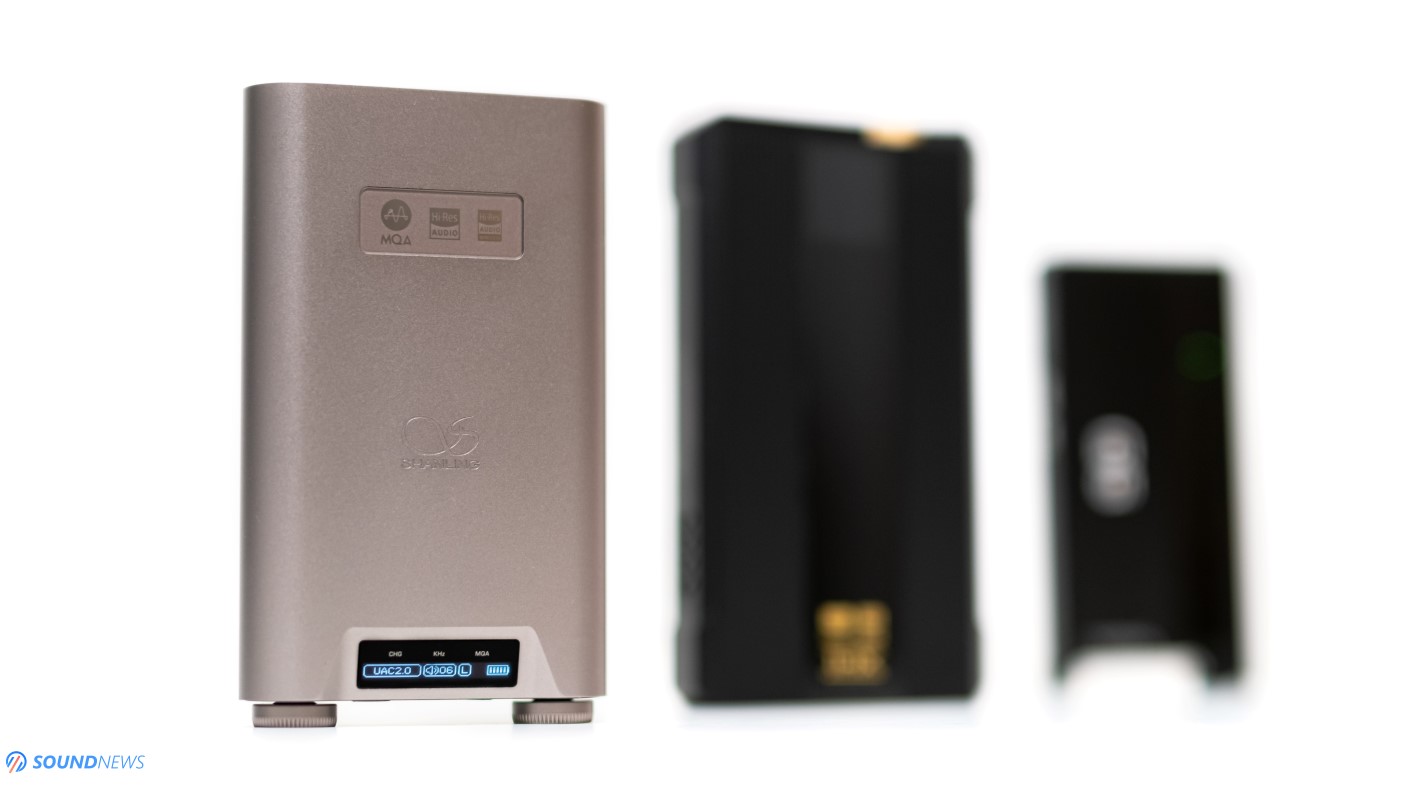
Under H7’s Hood
Maybe Shanling removed the essential parts that would make it a proper DAP, like a powerful CPU, RAM, ROM memory, and a heavily customized Android operating system, but it can still work as a portable music player using your phone’s screen to control the music. There is a powerful Bluetooth SoC on board and while you won’t get a bit perfect music playback via streaming services such as Qobuz, Tidal, Apple Music, and so on, it’s still very convenient to play tunes via Bluetooth. Since a Qualcomm chipset is not present, you can forget about AptX codecs and all their variants, but it still supports Sony’s LDAC (up to 990 kb/sec), including AAC and SBC, covering the entire Apple and Android ecosystem. H7 can also play tunes from a third-party digital transport, which can be your smartphone, PC/MAC, TV/media player, or even a gaming console. You have plenty of use cases thanks to USB and Coaxial digital inputs and to a driverless USB UAC 1.0 standard (if needed).
Its digital-to-analog conversion stage was built around the newest generation flagship DAC system of AKM. It’s a system combining an external AK4191EQ delta-sigma modulator with a flagship AK4499EX DAC chip, splitting the digital-to-analog process between these two for improved performance. AK4499EX superseded the AK4499EQ in Q3 2022 as their best one yet. Since every chip does its own thing and never be bothered with additional tasks, the noise floor and distortion lowered and the dynamic range went higher. In the usual fashion, Shanling developed their own current-to-voltage (I/V) conversion stage with the help of two ADA4896-2 dual op-amps, matched with resistors and capacitors for optimum performance.
There’s a brand new XMOS receiver released last year (XU-316) that’s currently the most powerful off-the-shelf digital receiver of today. We’re talking about a 16-core chip with up to 2400 MIPS and 1200 MFLOPS of processing power that unlocked MQA playback via its USB input.
Respectable DAC makers from China already developed their own clock management chips (see Gustard, Aune, and Topping) and it seems that Shanling followed the same course of action, infusing their code into a self-developed FPGA. Two low-phase noise crystal oscillators are following which improve the timing of the sound and everyone knows that timing is everything with digital audio.
Going forward to the amp stage, Shanling went ahead with a time-tested TPA6120A2 which can be seen in plenty of desktop headphone amps of today, starting with iFi Audio, THX-AAA amps and finishing with NFCA designs, it is literally…everywhere. These Texas Instruments chips were carefully matched with ELNA Silmic II and Panasonic tantalum capacitors tuned for a warm, smooth, and organic sound that would ’t hurt the transient response. All things combined, H7 will provide up to 1300 mW of power per channel into 32 Ohms via its BAL 4.4 jack and up to 450 mW of power via its SE jacks.
One of the most important aspects of portable HiFi devices is total harmonic distortion and noise levels. While THD is already very low, its noise floor is also staying in check. At maximum volume, it can reach 1.5 μV on single-ended and balanced outputs – a much lower number compared to any other portable DAC/Amp we tried so far. Alrighty fellas, my body and spirit are ready for some well-deserved music so, let’s hit some eardrums!

Sound Performance
I. Preliminary Impressions
Most of my listening was made via desktop headphones such as Erzetich Charybdis, Meze Elite, Audeze LCD-4, Kennerton Rognir, and Sennheiser HD800S, but I also tried a couple of IEMs. While it worked great as a DAC/Amp combo glued to my smartphone, I liked it a bit more when playing music from a microSD card, which added more blackness in between the notes, offering a clearer overall picture.
While Shanling’s M6 Ultra and M8 DAPs can be described as incredibly smooth, sweet, and mellow-sounding units, never offending the listener with bright trebles, I felt a different tonality unfolding with the H7 that walks a path paved by their M7 digital audio player. H7 was showing a grown-up sound that wasn’t only easy to listen to, but also technical, clean, tight, and highly resolving. I wasn’t gobsmacked by the resolving abilities of M8 and M6 Ultra, but their M7 and H7 are more potent, showing more nuance and inner detail happening on the micro levels.
One of the greatest traits of the H7 is that regardless of the music being played, it’s not forcing it in any way, it’s not sharp and the leading edges aren’t outlined, leading to a relaxed presentation. It almost feels like I’m listening to a high-end tube amplifier that offers similar sonic traits. The sound is slightly weightier compared to what you can find in FiiO’s portfolio, including M17 and Q7 which are more neutral in a way. H7’s tonality felt richer, especially in the midrange which added a sense of naturalness that wasn’t present on FiiO devices. I recently reviewed Topping’s G5 DAC/Amp combo and while I was impressed by its resolving abilities and transparency levels, which brought forward a lot of things that were previously unheard of buried deep in the background, sometimes it was too serious, too correct, and clean sounding for my taste. Every nuance (be it good or bad) was brought forward brutally. H7 is almost approaching the same levels of cleanness and transparency that Q7 and M17 inherit, but this time around there is a slight beatifying filter applied on top, that improves the contrast and the texture by a whole lot. That uber-clean trifecta (G5, Q7 & M17) always grabbed my attention no matter what, but H7 is leaving my thoughts alone, only sometimes grabbing my attention with an organic and easy to listen to presentation that puts me into a relaxed state of mind.
If you need a music-making machine, that would add some character of its own and remove traces of brightness and veil, then H7 is one of those units. For the record, I don’t find it overly warm or syrupy, it’s mostly neutral and clean, with a hint of a denser midrange and texture, which transform a simple listening session into a pleasing one. While punchy and quite impactful with the right tunes, I don’t find it extremely fast or hard slamming in the bass like the Q7 and M17 are, especially when used in DC power mode and ultra-high gain. H7 is calmer and easier going in this regard, there is enough punch and slam down low, but not as much as to call it impressive. Bass heads might look elsewhere, as I find its bass linear and only sometimes jumpy and alive.
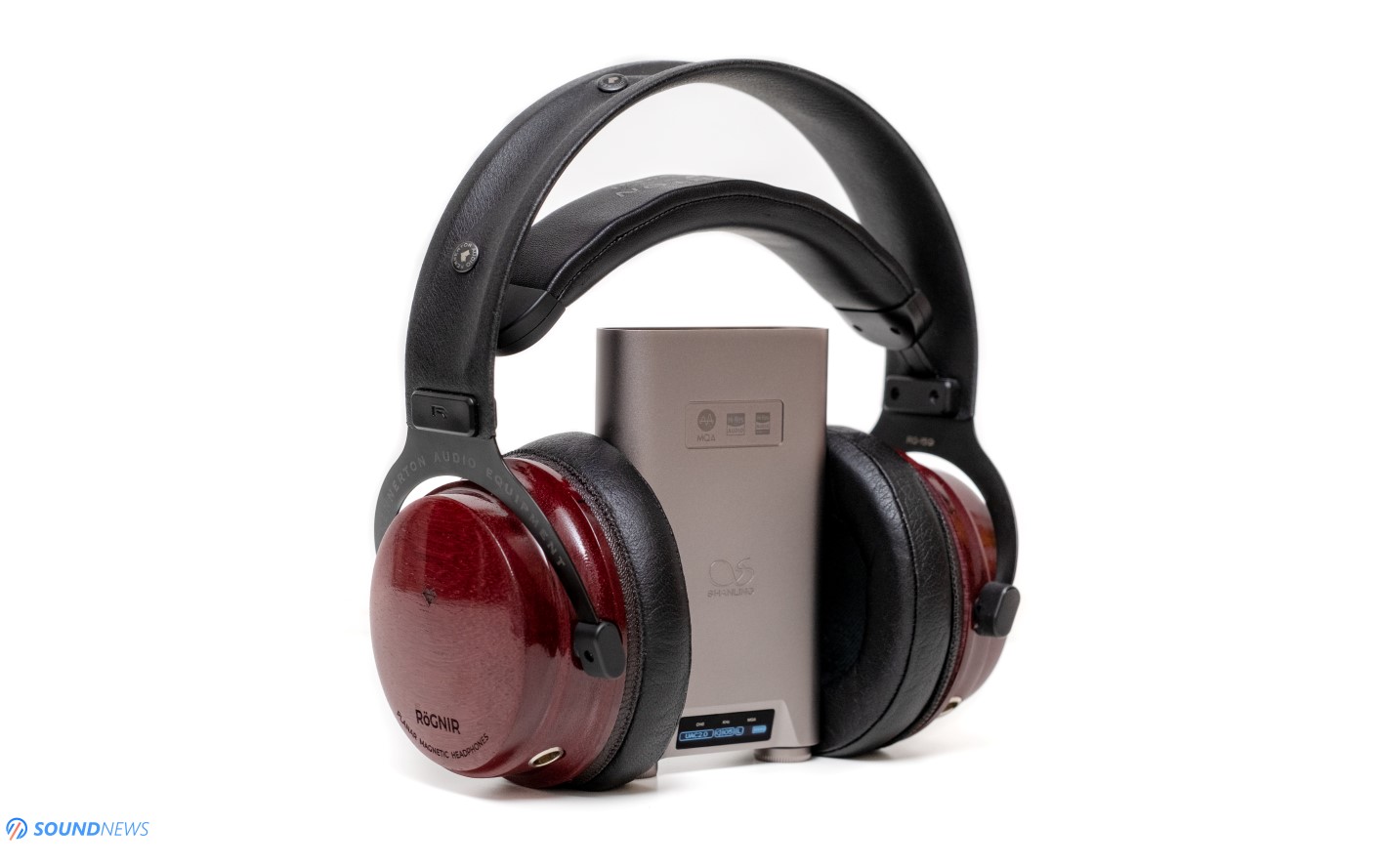
II. Power Output
Providing up to 1.3 Watts per channel (or 1300mW per channel in DAP terms), H7 is one of the most powerful portable devices that passed through my hands. FiiO’s Q7 and M17 are slightly more powerful, providing up to 1.5 Watts in the same load, but at the same time, those are considerably larger and heavier units. Here is a shot that will clear up your mind. Q7 and M17 for that matter weren’t portable…more like transportable and since both could be used with an external power supply, doubling their power in the process, plenty of folks were using them stationary, as an office or bedside setup.
H7 is much easier to carry around and it’s also much lighter weight coming at 352 grams versus 620 on Q7, I don’t have a problem using it outside as people never gave me the weird looks. Try waving a Q7 atop your smartphone on public transport and look at the curious faces all around. The reason I’m telling you this is if I’m taking weight and size into consideration, then gram-for-gram, H7 is probably one of the most powerful units out there. With the above-mentioned desktop headphones, most of them being planar magnetic, H7 didn’t break a sweat even on the mid-gain position. Some of them worked well out of the 6.35mm (1/4”) jack, but all of them spread their wings via the 4.4mm balanced output, which made them snappier and deeper sounding as well. I didn’t feel gains in transparency and resolution, but the sound felt livelier and bigger, like switching from a portable to a desktop rig. You’ll get a nicer grip over the headphone drivers via balanced output and if you’re already saving for an H7, then please add a few more dollaritos for a 4.4mm balanced cable which will unlock its fullest potential.
It seems that H7 adopted a linear volume curve as opposed to a logarithmic one found on FiiO’s Q7 as at lower volume levels, H7 feels more powerful and louder, while at higher volume levels Q7 is taking the lead, but what was clear to me is that both were capable of driving difficult loads. Yep, even the Audeze’s LCD-4 and Sennheiser’s HD800S were driven close to their maximum potential on high gain and there was still plenty of volume left on tap for wilder dynamic swings. I went ahead a tried a few more headphones and H7 was never breaking a sweat. The only headphone that didn’t get enough headroom was Hifiman Susvara, but it shouldn’t be a surprise to anyone, as most desktop headphone amps couldn’t drive the damn things to adequate levels and I don’t see that as an issue. Sure, Q7 and M17 could provide up to 3 Watts in DC power mode decently driving the Susvara, but I would rather get 10 headphones driven close to their maximum while sounding organic and lush, than driving 11 headphones while sounding ultra-linear, lacking the fun factor and warmth.

III. Noise Floor & IEM Pairings
Shanling isn’t always providing the noise floor reading, but for their flagship H7, I see 1.5 μV of noise being mentioned via SE and BAL outputs, which is kind of impressive. It usually stays in the neighborhood of ~3 μV on SE and ~5 μV on BAL outputs and that makes me excited, as an army of sensitive IEMs are quietly awaiting their turn to be used via low, medium, and high gain settings.
Before telling you about my findings, you should know that Shanling didn’t use some tricky noise-shaping techniques to remove that noise from our hearing range, as they went with an old-fashioned way. A couple of OPA2211 op-amps are used as low-pass filters, picked specifically for their extremely low-noise characteristics and ultra-wide bandwidth. Combined with 100 μF capacitors and low-dropout voltage regulators, Shanling achieved an impressively low noise floor, without badly influencing the flow of the music, as it might happen with a few THX-AAA, NFCA, and PLFA designs.
Regardless if I was using its balanced or single-ended outputs via high-gain, not only I couldn’t detect traces of noise with ultra-sensitive IEMs, but after inserting and taking out a couple of them, it felt that the units weren’t powered at all. There is an absolute blackness in between passages, something that I didn’t hear on the Topping G5 & FiiO Q7, and in this regard, H7 fights the rejects the noise with a greater force compared to its competition.
After trying a few more IEMs, it was clear that H7 is a very IEM-friendly unit, never raising the noise or distortion to alarming levels. It was peaceful and completely noiseless via all digital inputs. I tried it even with my son’s Nintendo Switch and later with a PlayStation 5 and the same story repeated itself. There was a complete silence in between passages and a pitch-black background. FiiO’s Q7 wasn’t as impressive via super-high and ultra-high gain settings and if that absolute blackness is important to you, then H7 is quite probably the cleanest sounding unit we tried at our HQ. Seriously, it’s impressive!

IV. Dynamics & Transient Response
First and foremost, H7 will need a couple of hours, a minimum of 50 until dynamics will make their presence felt. Generally speaking, H7 is a marvelous unit when it comes to simple things as making you feel great while listening to music. There is a huge space in between the lowest and highest intensity notes and the very best example I can give is Dacoit Duel by AR Rahman (Qubuz / Tidal), please give it a try…but lower the volume as big drums will be coming out of nowhere. This is a very high dynamic range track and usually, dopamine will start rushing when a well-driven IEM/headphone will start doing its mojo. H7 will arrive at those peaks and it wouldn’t be a problem to attain them. You can feel your eardrums shaking on the right setup and I’ve heard that loud and clear on H7.
The same goes with reference recordings, especially on big orchestras when out of nowhere low intensity growls will be exchanged with crescendo moments. If you’re familiar with Deutsche Grammophon, Reference Recordings, Stockfisch-Records, or Chesky, then you know what I’m talking about. Dynamics were never a problem on the H7, as it will be providing the full package, from tiny intricacies as foot movements up to drums of fury.
The transient response on the other hand wasn’t as spectacular as it was on FiiO Q7’s, but please don’t take it in absolute terms. I’d say that H7 offers about ~90% of what Q7 is capable of in terms of lightning-fast speed and decay. Q7 almost feels like Usain Bolt, moving unnaturally fast…to a point of becoming a little aggressive sounding. I played drums for a short period of my life and know their timbre and the timing necessary to peacefully stop those sounds in the air. FiiO’s Q7 does that way too fast, the snares are stopping abruptly and that’s not what I’m hearing in real life. At first, Q7 will impress an electronic addict going in and out before you could say Jack Robinson and that’s something that won’t happen on H7. Shanling’s unit sounds calmer in this regard, effortless would be the right word and it again reminds me of well-designed tube amplifiers, which have just the right pitch and timing. It’s no surprise the best guitar amps in the world use vacuum tubes that offer sweeter harmonics and distortions. I’m not getting distortions via H7, but sweeter harmonics are definitely unfolding on a deeper level, which doesn’t make it fast or slow…but just right.
The bass slam wasn’t impressive on the first day, but after putting more than 50 hours into it, three days later, it felt rejuvenated and a little punchier sounding. As a whole, I never felt like sitting in between the hammer and the anvil, as the bass punch wasn’t as strong as it was via Q7. I would say it’s above average, it’s quite good, but not outstanding and that’s all right, as not everybody wants an aggressive sound signature.
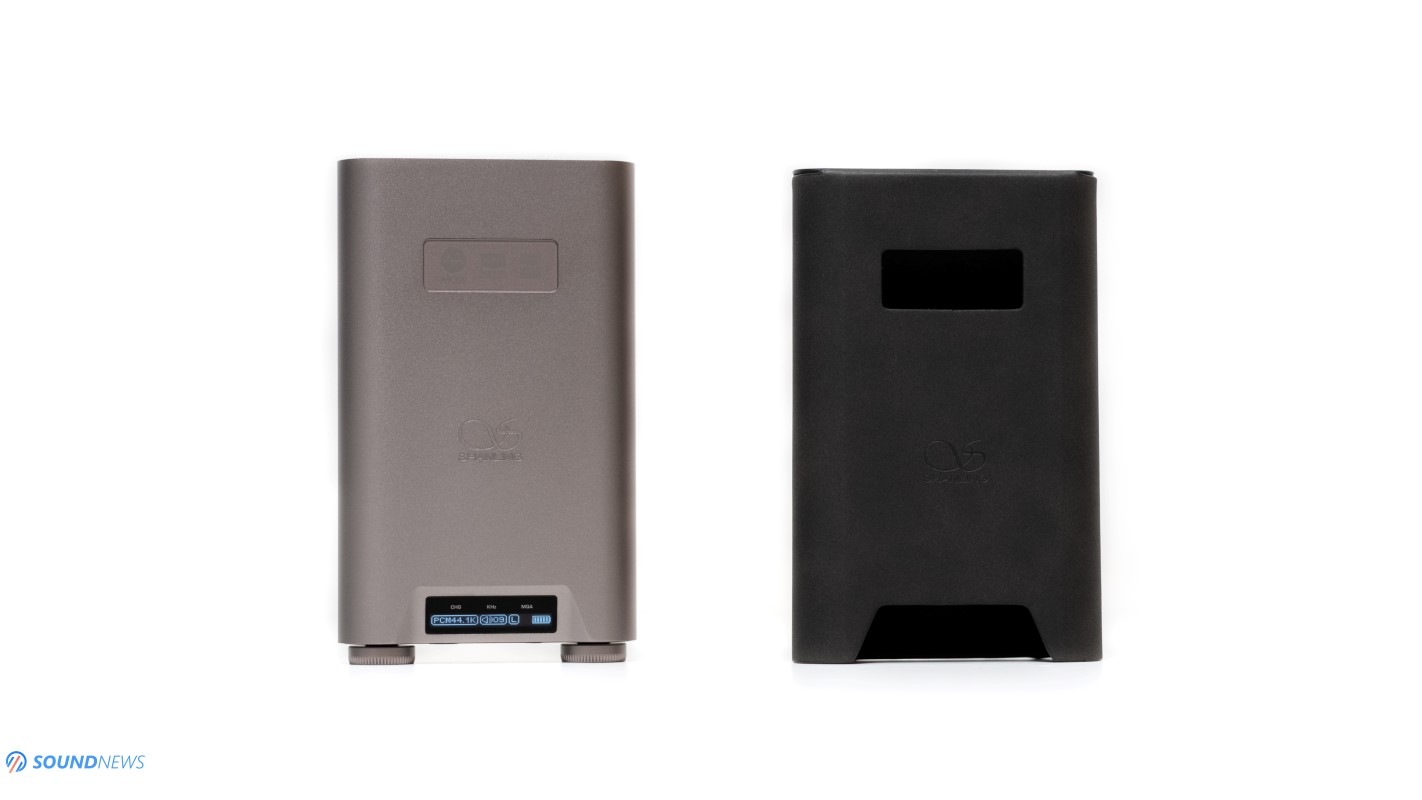
V. Soundstage & Depth
I’m late to the party with my H7 review, as I don’t like rushing things. A few days were needed for the sound to settle in and what was supposed to be a week of listening, transformed into a two-month listening marathon. You probably saw it in plenty of my pictures posted around here, including in a few videos of mine, as I still wanted to have a nicer grip over its sound signature.
At first, H7 was two-dimensional with little to no depth, as if all musicians were lined-up, playing exactly at the same level in a 2D Super Mario Brothers world. That was a problem, as usually most of my blues have plenty of depth, even less capable units sitting on the table offered more width and depth to the sound. Something wasn’t adding up, as usually, AKM silicon is quite impressive in this regard, always having that open window to the sound. As I have explained in the previous chapters, the sound was stiff and not that impactful at first, and the only things I could blame were low listening hours, with too little current flowing through its circuit boards. It didn’t need much time to change its clothes, as on the third day, the windows opened wide and finally, I could feel the sound freed from its shackles. Not only the sound was easier on the ear with intricate notes never scratching my timpani, but the sound itself got more depth and from a two-dimensional sound, H7 started sounding like a Biggity Big one.
A few reviewers have already posted their conclusions on H7, but maybe they didn’t put in as many hours as I did, unlocking its truest form. I don’t find it limited here, the sounds are still expanding or shrinking in size depending on the recording and it isn’t that different from a FiiO Q7 in this regard. These have very strong personalities, being at poles apart in terms of tonality and timbre, one embracing the darkness and the other sitting on the brighter side of neutral, but when it comes to scale and depth, I can hardly differentiate them. The scale itself is by a hair bigger compared to a Topping G5 and to all Shanling devices I have tried in the past, including their M7 and M8 flagship DAPs, as in my humble opinion, H7 pushes a bit more air in between the notes.
Bob Dylan’s Man in the Long Black Coat (Qobuz / Tidal) still provided those amazing spatial cues before he uttered a single word. This is an exemplary mastered track and if you want to hear musical notes interplaying with each other, then this is that track. There is a strong echo that scatters the sounds all around, the guitars are murmuring and are slowly fading away which adds to the feeling of a breathable type of sound. This particular track feels too serious & correct on the Topping G5 and FiiO Q7, as the notes weren’t lingering as much. I can’t say that two of them were wrong and one was just right, but H7 sounded closer to the real thing, decaying the music slowly and gradually, instead of hitting an imaginary wall that would stop the sounds on a dime. To me, H7 is not the most precise sounding unit when it comes to spatial cues, it’s not the sharpest or the strongest when it comes to leading edges, but it feels right when music is playing and I can’t say that something is truly missing.

V. Transparency & Detail Retrieval
As I was cruising through my music collection glued to a phone, a PC, used via Bluetooth and then via a microSD card inserted into the back of the unit, H7’s transparency felt…like a roller coaster. Even via Sony’s LDAC codec, there was a slight degradation of the sound, a gentle smearing that stained the music, especially the frequency extremes. The most curious sounds are always happening down low and in the upper treble as we are rarely hearing these sounds in our daily lives. Naturally, our brain will lock on the bass and treble regions first and then on everything else. Via Bluetooth, the bass lost its upper hand not only in terms of layering and cleanness but also in terms of energy that was brought forward. The bass was almost muddy sounding and the final kick wasn’t impactful anymore, as if life was drained from the lowest octaves. More or less the same happened with the treble output, H7 was already cruising through bright recordings as a champ and a gentle roll-off would tip the balance towards warmth and darkness…and that’s exactly what happened. It started rolling off parts of the upper treble and some of its spark, swiftness, and refinement vanished away. When I moved to its USB type-C input, things improved by a whole lot, the energy was finally there, the smallest intricacies finally started appearing as a starry night sky and I didn’t need to close my eyes to browse through my music anymore. Everything felt livelier and cleaner sounding at the same time and finally, it could exchange a few punches with its direct competitors.
A few days later, I was curious how that microSD integration was made, I updated it to FW 1.5 which should finally load the cover albums, and to my surprise, I liked its performance even more. It wasn’t a night and day difference by any means, but it felt like an invisible DDC was added in between it and my music, as there was a blacker background all around. The silence between the notes was more apparent and the notes themselves had a more defined body and contour. Believe it or not, the transparency and resolution went up by a notch and finally, it won’t just challenge its close competitors, but it might even beat them on their own ground.
I wanted to explain how things are going down to the smallest details, as this chapter has a lot to do with the input that is being used. As a rule of thumb, use Bluetooth only when it is the only option available, otherwise, stick with a USB-C connection or better yet – with its microSD card input which dodges all types of noise that may pass through its USB input.
With that out of the way, there is as much detail and shimmer as I’m getting from FiiO Q7 and Topping G5, but those small nuances don’t feel forced, pushy, or aggressive. At first, Q7 and G5 might appear as a clearer window towards your music, but after a close inspection, I can hear the same amount of information coming forward from H7, the only difference lies in the way that information is being provided, where H7 is effortless and relaxing in doing its job and G5 together with Q7 feel dead-serious, to a point of becoming aggressive and sometimes even emotionless.

VI. Frequency Response
A. Bass
On the first day, I would tell you that H7 is way too shy in the bass, on the next day I would say that I can finally hear the sub-bass appearing in my tracks, but on the third biblical day, I would tell you to forget everything I have mentioned two days ago. After a week of listening, it was no longer changing its sound signature for the better and even if it went on for a few more weeks, H7 never changed its hide from that moment onwards. Generally speaking, we are dealing with a slight artificially induced warmth in the bass. It’s not much, but you can hear it with bass-intensive music. I’m not sure if it’s coming from that flagship AK4499EX, or ELNA Silmic II together with Panasonic tantalum caps…but clearly, all Shanling devices have this trait, starting with M1S & M3 Ultra and finishing with top-of-the-line devices. I enjoy the added weight and presence in the bass and for me, this is my kind of bass, which feels lively, yet distortionless. The only thing you might dislike is bass agility, which was still nimble, but it won’t grasp Q7’s need for speed, always racing against my tunes.

B. Midrange
Please repeat my words slowly and carefully: AKM’s Velvet Sound technology, OPA2211 op-amps which are known for their smooth and organic character, Panasonic tantalum and ELNA Silmic II caps which are (again!) known for their smooth, easygoing, and warm sound signature and think about the midrange. This kind of midrange is something that I always appreciated about Shanling devices and that’s (probably) my no.1 reason I slowly but gradually moved towards units that are putting me into a state of musical Nirvana. The grand exodus happened somewhere last year when I ditched perfect measuring gear with components that make me feel on top of the mountain, feeling every single beat of the music. While H7 isn’t exactly sweet and overly warm, there is a strong sense of rightfulness going on, especially with vocals and acoustic music. There is the right amount of energy, sharpness, and texture, that isn’t making it warm or bright…but right. I’m seeking this kind of performance from all and everything and that’s exactly why I have arrived at the Rockna Wavedream Signature DAC and Wavedream NET stack, powering all with a Trafomatic Primavera headamp, as with those three…I’m no longer listening to music that was recorded in the past, but to a resurrected version of my favorite artists that are teleporting into my office after pressing play.

C. Treble.
Shanling always had this insatiable desire to move the sound from their high-end desktop components which are sadly being sold only in Far-East countries into their portable devices. Two years ago, I wasn’t so sure about this statement, but right now, I see a very clear path laid down for future generations to come. H7 sounds exactly like how their M6 Ultra sounded in the treble with an added sparkle and definition up top which felt muted even on their upper-class DAPs. H7 is clearer, more extended, and provides a bit more information as well. If it feels that I’m describing a fairly neutral unit that outperformed all past Shanling devices in terms of cleanness, transparency, power, and control…then that’s exactly what I’m trying to describe. It’s redundant talking about treble extension or detail, as H7 renders all that pretty easily, without adding a fake ringing to it, without trying to juggle and interfere with any region of the frequency response, as some other units might do (cough Q7 cough).
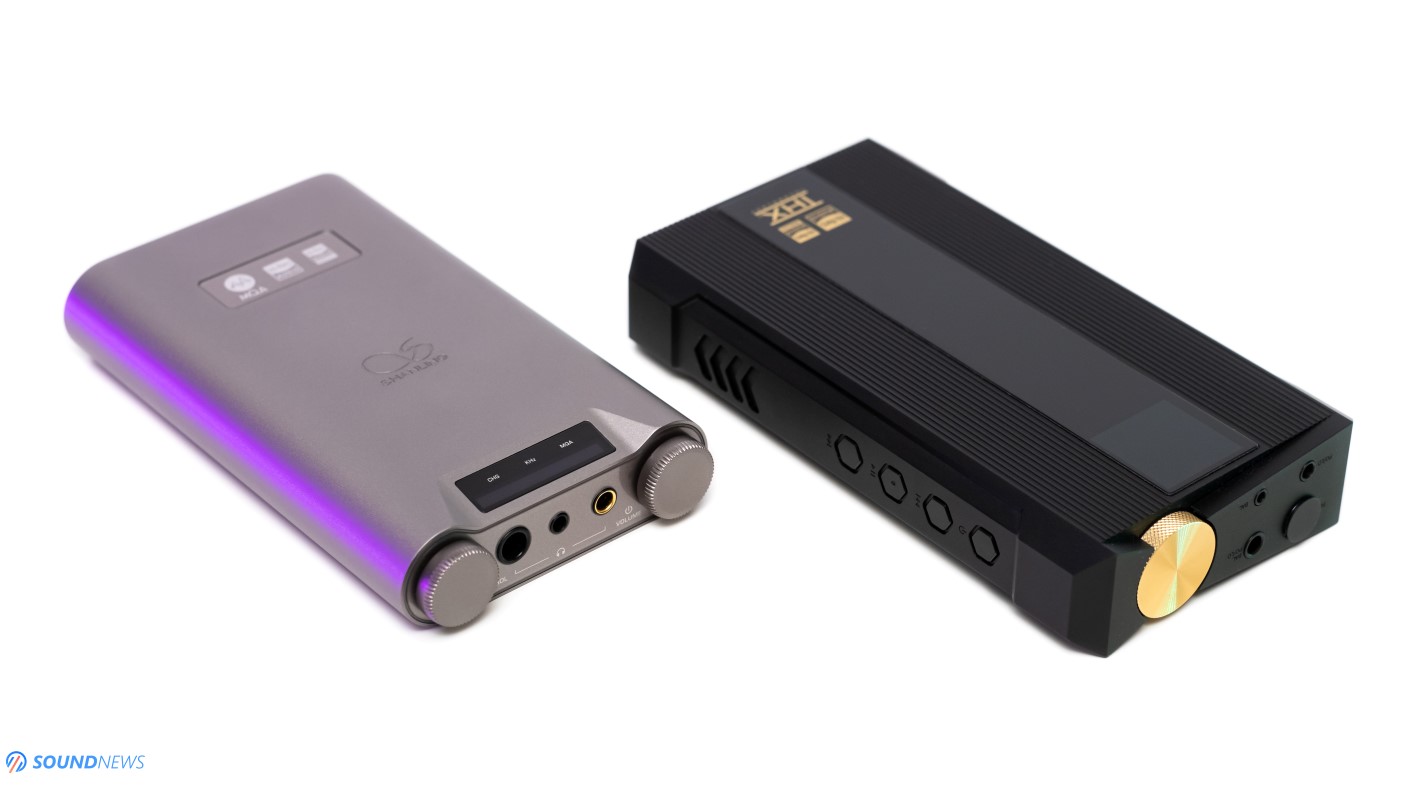
VII. An Important Comparison
Shanling H7 ($829) VS FiiO Q7 ($749)
You already have my detailed FiiO Q7 review which you can read right here, you already know everything about Shanling H7 and I don’t see a reason to repeat my words regarding their looks or specs, but I’ll mention that in my daily life, it was much easier to live with the H7 in my pocket as opposed to Q7, which only worked with my jacket. Sure, I can stick Q7 into my pocket, but I would need to tighten my belt, as at 620 grams it feels like lurking in the streets hiding a gold bar in my trousers. Seriously now, Q7 is a transportable beast and I don’t see myself carrying it in the summertime. H7 is by ~2 times lighter and it is considerably smaller, having almost the same width as my smartphone and a deeper body. A stack like that can work on our 35-degree Celsius summer days even without tightening my belt and if portability is important to you, then H7 wins this match without even starting it.
I will leave a few words about their features, as I do believe H7 has two aces under its sleeve which might be interesting to you. That microSD card slot is quite a special feature as you can transform it into a DAP…without being one. You’ll still use your phone to control the music playback, but you’ll be using your phone, a much snappier and faster-moving unit than any current production DAP. You don’t need to use a USB-C wired connection as everything happens wirelessly, a feature which I didn’t only find interesting, but also better sounding compared to any other working mode. The second ace is revealed on its back, which transforms it into a hybrid portable/desktop stack thanks to a pair of RCA outputs, just in case you will be using powered speakers in front of your PC, or in case you want to juice it up with a third-party headphone amp or integrated amplifier. You can do that with the Q7 as well, via a special adapter cable, but having RCAs on its back feels so at home, at least to me. Q7 on the other hand comes with that DC-power working mode which attaches it to a power brick and to a cool-stand, which will double its power output from 1.5 Watts to 3 fearless Watts into 32 Ohms. It depends on what feature is more important to you, but keep in mind that both devices were able to drive my entire headphone collection (except for the Hifiman Susvara) as battery-operated devices.
Sound-wise, we are dealing with two distinct sound signatures. One that goes for absolute linearity, showing off some incredible measurements as dynamic range and there’s a completely different unit that cares more for the act of music listening, even if it might impress you less on the technical level. If everything you want in a portable unit is an abundance of power, the best transparency, and transient response, then I’ll say it right away that FiiO’s Q7 will win you over from the get-go. If you’re an experienced audiophile and you no longer chase the absolute best measurements and from time to time you are trying to enjoy your bloody music collection, then Shanling’s H7 looks like a better deal in my eyes.
At first, Q7 felt cleaner and sharper and while it is still stronger when it comes to leading edges, H7 is exactly as clean and detailed, without pointing out its fingers towards the smallest things. Q7 is also faster sounding and that can feel like a blessing or a curse, depending on your listening habits. With modern tunes and especially with electronic beats, Q7 will offer you that impeccable grip over headphone drivers, plus a lightning-fast decay of the notes. With acoustic music, Q7 no longer impresses as the music is fading away too fast, starting with the vocal cords, string-based instruments, pipes, and piano, everything feels like it is being played at 1.25x speed like you nasty buggers are watching my Youtube videos (you think I don’t know). On the other hand, H7 always relaxes your spirit, you feel more confident and calmer when H7 is playing your tunes. The music vibrates a little longer and fades away a microsecond later. You might think that a microsecond isn’t that much, but it’s everything when listening to live tunes for example.
The differences aren’t stopping here, for example, I find Q7 more precise in its imaging, as you can see the notes with your third eye much easier, on the other hand, Shanling’s H7 wraps musical notes in a dark mist, especially when listening via microSD, which makes spatial cues a bit more natural and organic, albeit fuzzier. Their frequency response is similar, yet it’s so different at the same time. Both are pretty close to neutrality, although Q7 does that a little better as nothing is standing out too much. The bass feels deeper and punchier on the Q7, but the midrange section is where H7 is shining so much brighter. There is simply more of everything, more texture, more weight, more presence, and meat on the bone, something that feels thinner sounding on the Q7 by comparison. The treble is strong, defined, and sometimes exaggerated on Q7, something that feels completely inoffensive on the Shanling, carrying as much information and sparkle, but without pushing forward a metallic ringing, which might appear on a few tracks via FiiO’s unit.
All in all, the sevens were equally impressive on the go and in my office. I find them interesting and unique, standing out with a few traits that I didn’t find in the usual DAC/Amp combos. Shanling H7 feels like their best portable unit, although I didn’t try their M30, which I’m sure is even better sounding in all regards. The microSD card slot and the RCA outputs on its back make it desirable especially if you’ll be using it at home and on the go, sounding similar in both situations, but having an edge when playing back music from a microSD card.

My Conclusion
Gram-for-gram, Shanling’s H7 is one of the most powerful portable units that passed through our hands, eclipsed only by FiiO’s transportable behemoth, which provided a little bit more grunt. Other than that, H7 sits at the edge of what I would call portable. It has just the right size for flagship-level specs, the build seems to be of high quality and its rounded shape will surely resist plenty of abuse in your pocket, jacket, or briefcase.
Having one of the lowest noise floors ever tested, you can power your entire IEM collection, even ultra-sensitive and low-impedance creatures which will never bring traces of noise, let alone hiss or distortions. Powering an entire headphone wall, except for a stubborn black sheep, Shanling’s H7 is blurring the line between portable and desktop components, sounding like a serious piece of equipment.
Although technical and clean sounding, the cherry on top was its tonality and life-like timbre which made it real and organic sounding more than anything else. The only thing I can complain about is not including the leather case which fits it like a glove. Other than that, H7 could easily dance in the octagon with any current production end-game portable DAPs or DAC/Amp combo and it might still finish the round with a KO. It’s expensive, but it justified its price with a great component section and sonics to match its heritage, easily winning our hearts, our praise, and the highest award.

Shanling H7 was kindly provided by Shanling. You can purchase it from their AliExpress Store or worldwide distributors right here. In case you get one, please let me know in the comment section below if it’s treating you well.
PROS:
- Big, Bold, Ballsy
- Great looks, rock-solid build quality
- Easy to use UI, it is feature packed to its teeth
- All the inputs & outputs you could possibly desire
- Additional features can be found via Eddict Player and Shanling app
- Extremely powerful via high gain, could drive even desktop planars & dynamic headphones
- Effortless, easy-going, organic, and life-like sounding
- Although neutral in its presentation, it gently leans towards warmth and smoothness
- Offers good control over headphones drivers
- Excellent dynamics, although it’s not the fastest nor the punchiest unit out there
- Resolving and clean sounding without becoming tiring or aggressive
- Good imaging, great depth, excellent soundstage
- Dead silent with IEMs & sensitive portable headphones
- Offers an extended frequency response covering our hearing in full
- One of the nicest portable devices that passed through our hands
CONS:
- Pricey!
- Leather case is not included in the package, you’ll need to purchase it separately
- An USB-C to Apple Lightning cable is not included in the package, you’ll need to get it separately
ASSOCIATED EQUIPMENT:
- DACs: Rockna Wavedream Signature XLR, Chord Electronics DAVE, Gustard R26, Gold Note DS-10 PLUS & PSU-10 EVO
- Wireless Streamer & Music Server: Rockna Wavedream NET, Roon Nucleus
- DDCs: Denafrips Gaia, Singxer SU-6, Matrix X-SPDIF 3
- DAC/Amps: Shanling H7, FiiO Q7, Topping G5
- DAPs: FiiO M17, Shanling M7, M6 Ultra, Hiby RS6
- Headphone Amps: Trafomatic Primavera, Trafomatic Head 2, Enleum AMP-23R, Ferrum OOR + HYPSOS, Burson Soloist 3X GT, Flux Lab Acoustics Volot
- Preamps: Chord Ultima 3 Pre
- Power Amps: Chord Ultima 5, Burson Timekeeper 3X GT (x2)
- Loudspeakers: KEF Reference 3, Musician Knight 1, Sound of Eden Crescendo UNO
- IEMs: FiiO FH9, FH7S, Meze Rai Penta, LittleDot Cu KIS, 7Hz Timeless, Kinera Skuld & others
- Full-sized headphones: Erzetich Charybdis & Phobos V.2021, HiFiMan Susvara & HE1000SE & Arya Stealth, Meze Elite & 109 PRO, Audeze LCD-5 & LCD-4, Sennheiser HD800S, Kennerton Rognir (planar) & Vali, Apos Caspian, Sendy Peacock & Apollo, HarmonicDyne Poseidon & others
- Interconnects: Crystal Cable Reference2 Diamond, QED Reference (x2), Topping TCX1 (x2)
- USB Cables: Supra USB Excalibur (x2), Chord C-USB, Matrix Hi-Fi USB
- HDMI Cables: Audioquest Diamond DBS
- Speaker cables: Kimber PR8, Audioquest Type4
- Power Cables: Isotek EVO3 Premier (x3), iFi Audio SupaNova (x2)
- Balanced Isolation Power Conditioners: PLiXiR Elite BAC1500 (stereo setup), Elite BAC400 (headphone setup)


